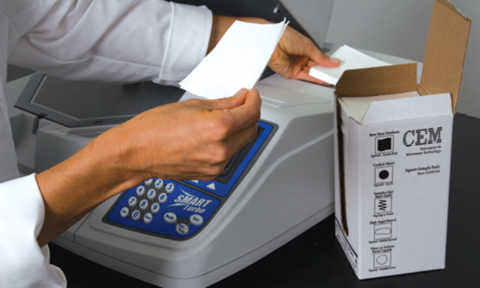
CEM describes how Alcontrol is using the SMART Trac II Fat Analysis System to make substantial savings.
In today’s diet and health conscious society, the demand from consumers and regulators for good information on the content of food is almost obsessive – particularly in the case of fat.
Analysis needs to obtained quickly and companies can end up in serious trouble if the figures are not accurate and reproducible.
No one is more aware of this than Alcontrol Laboratories, one of Europe’s largest laboratory organisations, whose specialism is the testing of high-volume foodstuffs in relation to health and safety compliance requirements.
In response to growing customer demand for rapid sample turnaround, Alcontrol recently expanded two of its sites and, in December 2010, asked microwave instrumentation provider CEM to supply its latest SMART Trac II Fat and Moisture Analyser.
Alcontrol reports that the switch in method has resulted in substantial savings in effort, consumables and costs.
In addition, the organisation has benefited from a Method Transfer Kit which ensures that laboratories any distance apart will apply the method in exactly the same way and achieve total uniformity in their results.
The key fat analysis technology used by SMART Trac II is NMR (nuclear magnetic resonance) spectroscopy.
‘Nuclear’ in this case refers to the fact that NMR can analyse atoms right down to nuclear level. It has much in common with the magnetic resonance imaging (MRI) scanning technology used in hospitals.
In SMART Trac II, NMR is combined with the drying ability of the SMART Turbo Microwave Moisture/Solids Analyser. The compact unit is easy to use and, on average, analyses fat and oil samples in eight seconds.
One advantage of going for NIR rather than the commonly used FTIR (Fourier transform infrared) or NIR (near infrared) spectroscopy is that there is no need for frequent recalibration or for the introduction of solvents.
The varied applications of SMART Trac II include meat and dairy products, snack foods, condiments and soaps, and users can expect a test precision of 0.01 per cent.
For a brief overview and contact details, please click on the link above.






